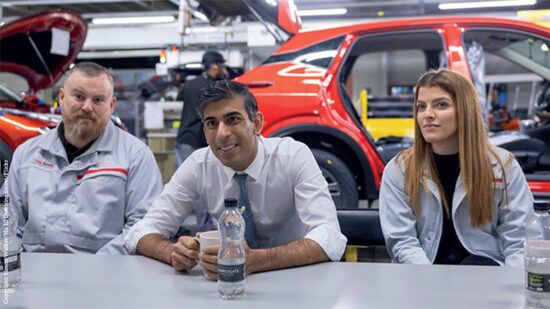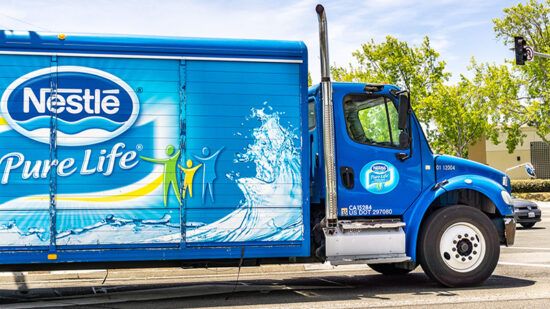With COP26, the United Nations Climate Change Conference, showing a world committed to doing better, advisers and clients increasingly may be seeking out investments that tackle climate change.
It’s no exaggeration to say that climate change is an existential threat for our clients and broader society, and it requires fast-growing solutions at scale. Tinkering around the edges won’t do. We have no choice but to completely decarbonize the economy within the next 30 to 50 years. That is within most of our lifetimes, and some of our careers. Advisers should not be just thinking about the impacts on clients’ investments, but acting on it, now.
A GROWING INVESTMENT OPPORTUNITY
There are many ways clients may want to make climate a part of their investment process, ranging from simply measuring holdings’ emission intensity (and perhaps committing to driving that down over time) to more impact-driven investing. But even strategies that don’t set explicit carbon-reduction targets should be able to find exciting, transformative companies that offer “climate solutions.” These are better and cheaper alternatives to existing fossil-fuel based products and services. Importantly, they are not simply “green” for their own sake, but offer fundamental improvements to the industries they are disrupting. Over time, it’s entirely likely that these companies will make up a larger part of many portfolios.
Companies that provide climate solutions are essentially businesses that drive or underpin substantial reductions in or the removal of greenhouse gas emissions through their activities. These companies can be categorized into three rough groups: “enablers,” “disruptors” and “removers.” While removers do exist today, the underlying direct air carbon capture and storage technology is not at commercial or economic scale, and therefore not immediately investible. This piece concentrates on enablers and disruptors instead, ending with a final group, “adaptors.” These are companies that aim to reduce the emissions intensity of their own currently fossil-based or reliant products and that are an important stepping-stone in the ultimate goal of decarbonization.
CLIMATE ENABLERS
The most developed sector thus far lies in the enabler, or “picks and shovels,” category. To decarbonize our energy supply, we will need to build out at least 51 times our current solar energy generation capacity in the coming decades. This is a huge growth opportunity for the companies that provide the underlying products, such as solar panel manufacturers. As further capacity expansion for leading players allows them to keep prices lower than the competition, customers and end consumers should benefit as well, as the resulting price deflation helps lower electricity prices.
Hydrogen electrolyzers are another intriguing climate solutions product. At the moment, 99% cent of the world’s supply of hydrogen is produced from hydrocarbons (natural gas and other fossil fuels), but electrolyzers could eventually replace hydrocarbons with “green” hydrogen made using just water and electricity. However, the winning technology is still up in the air, and it’s only this year that the first commercial-scale, automated manufacturing facilities for production are opening.
NEXT-GENERATION DISRUPTERS
There are also a growing number of companies offering low or zero-carbon alternatives for consumers. The electric vehicle market has been the most successful example of this disruption to date, with sales of EVs rising from 45,000 in 2011 to over 3 million in 2020, and showing no signs of slowing down. This has largely, and unusually, been driven by a single company, which has single-handedly forced an entrenched industry to accept the inevitability of change. Incumbents are scrambling to adapt. It seems the plant-based meat industry is following a similar trajectory, although the lower barriers to entry mean incumbents are more prepared to design “me too” products to benefit from the growing market.
However, offering zero-carbon products to those few consumers that let ethical considerations drive their purchasing decisions won’t be enough to win in these markets. Companies that sell genuinely better and cheaper alternatives, or have a path to doing so, are more likely to come out on top.
There’s an important underlying trend here of price deflation driving these enablers’ and disrupters’ growth. This is very close to what we have seen as industries, such as retail and advertising, have been disrupted by digitization, as Moore’s Law drove exponential improvements in computing power.
Swanson’s Law is a similar trend — for every doubling of solar generating capacity, the price of the resulting energy drops by 20%. There’s no reason for this trend to stop any time soon, either. The fact is that renewable, sustainable products benefit from a substantially lower floor price than fossil fuel alternatives. Fossil fuels have an effective minimum cost that reflects the costs of finding and exploiting these resources, but sunlight and wind power are free and the technology used to capture their energy is constantly falling in price.
IT TAKES ALL SORTS
As climate solutions decarbonize and disrupt existing industries, they are likely to become a larger part of many client portfolios going forward. But we also shouldn’t neglect adaptor companies, which are businesses that aim to reduce the emissions intensity of their currently fossil-based or reliant products. Many industrial giants fall into this category, as would most other companies that aim to transition towards a zero-emission future.
As well as trying to minimize the environmental impact of their own operations, these companies may also be reviewing the environmental impact from customers’ use of their products and focusing on energy efficiency from a lifecycle perspective. Of course, this reality is frequently more complicated than this binary approach implies. For example, one of the largest chemical producers in the world is both an adaptor and a climate solutions provider, given the need to decarbonize chemical production alongside its work in battery production and recycling.
Ultimately, the lesson is we need all types of companies — enablers, disrupters and adaptors — to solve the climate challenge, and all will offer exciting investment opportunities over the coming decades.
Paulina Sliwinska is an investment manager at Baillie Gifford.








